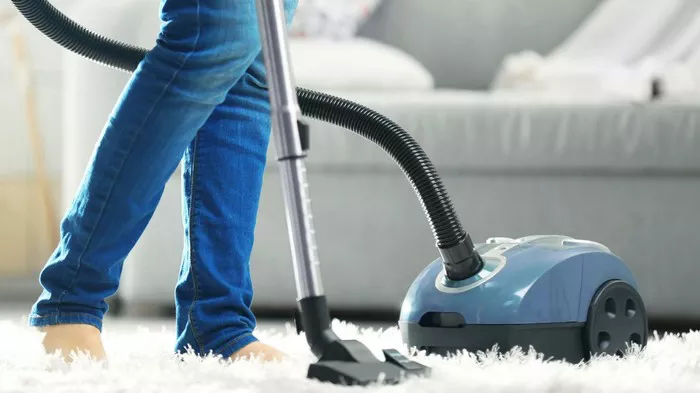Vacuum cleaners are indispensable tools in modern households, simplifying the task of cleaning floors, carpets, and other surfaces. At their core, vacuum cleaners operate on a simple principle: suction. By harnessing the power of suction, vacuum cleaners effectively remove dirt, dust, and debris from various surfaces, leaving your home cleaner and healthier.
Components
A vacuum cleaner comprises several key components, each playing a vital role in its functionality:
1. Motor: The motor is the heart of the vacuum cleaner, powering its operation. It generates the necessary energy to drive the fan and create suction.
2. Fan: Connected to the motor, the fan is responsible for generating airflow within the vacuum cleaner. As the fan rotates, it creates suction that draws in air along with dirt and debris.
3. Dustbin or Bag: The collected dirt and debris are stored either in a dustbin or a disposable bag, depending on the type of vacuum cleaner. Bagged models use disposable bags to contain dirt, while bagless ones feature a dustbin that can be emptied and reused.
4. Filters: Filters play a crucial role in trapping smaller particles, preventing them from being released back into the air. Common types of filters include HEPA filters, known for their effectiveness in capturing allergens and pollutants.
5. Attachments: Vacuum cleaners often come with various attachments such as hoses, brushes, and crevice tools. These attachments enable users to clean different surfaces and reach inaccessible areas effectively.
Motor and Fan
The motor powers the fan, which is pivotal in creating suction within the vacuum cleaner. As the fan spins, it draws in air, creating a low-pressure zone that causes surrounding air and dirt to be sucked into the vacuum cleaner. This process ensures efficient removal of dirt and debris from surfaces.
Suction Power
Suction power is a critical factor in determining the effectiveness of a vacuum cleaner. Higher suction power allows the vacuum cleaner to pick up more dirt and debris efficiently, resulting in a thorough cleaning performance. When choosing a vacuum cleaner, consider its suction power to ensure it meets your cleaning needs.
Dustbin or Bag
The dustbin or bag serves as a container for collected dirt and debris. In bagged vacuum cleaners, dirt accumulates in a disposable bag, which can be easily removed and replaced when full. On the other hand, bagless models feature a dustbin that can be emptied and reused, eliminating the need for disposable bags and reducing waste.
Filters
Filters are essential components of vacuum cleaners, particularly in capturing smaller particles that may escape the dustbin or bag. HEPA filters, in particular, are highly efficient at trapping allergens and pollutants, making them ideal for households with allergy sufferers or pets. Regular cleaning or replacement of filters is necessary to maintain the vacuum cleaner’s performance and air quality.
Attachments
Attachments such as hoses, brushes, and crevice tools enhance the versatility of vacuum cleaners. Hoses allow for extended reach, enabling users to clean high or hard-to-reach areas effectively. Brushes are effective for removing dirt and debris from various surfaces, while crevice tools are designed to access tight spaces such as between furniture or along baseboards.
Maintenance
Proper maintenance is essential to keep your vacuum cleaner operating optimally. Regular maintenance tasks include emptying the dustbin or replacing the bag, cleaning or replacing filters, and checking for any blockages in the hoses or brush rollers. By following a maintenance schedule, you can prolong the lifespan of your vacuum cleaner and ensure consistent cleaning performance.
Types of Vacuum Cleaners
There are several types of vacuum cleaners available on the market, each with its advantages and suitable applications:
1. Upright Vacuum Cleaners: Upright vacuum cleaners are popular for their powerful suction and ease of use. They are ideal for cleaning carpets and large areas efficiently.
2. Canister Vacuum Cleaners: Canister vacuum cleaners feature a separate canister unit connected to a wand and hose. They offer versatility and maneuverability, making them suitable for cleaning stairs, upholstery, and hard floors.
3. Stick Vacuum Cleaners: Stick vacuum cleaners are lightweight and portable, making them convenient for quick cleanups and reaching tight spaces. They are suitable for small apartments or as supplementary cleaners.
4. Robotic Vacuum Cleaners: Robotic vacuum cleaners are autonomous devices equipped with sensors and navigation systems. They can navigate and clean floors automatically, making them ideal for busy individuals or households with pets.
Conclusion
In conclusion, vacuum cleaners operate on a simple yet effective principle of suction, making them indispensable tools for maintaining clean and healthy homes. By understanding the basic components and principles of vacuum cleaners, users can make informed decisions when selecting the right model for their needs. With proper maintenance and care, vacuum cleaners can continue to provide efficient cleaning performance, ensuring a cleaner and healthier living environment for years to come.

